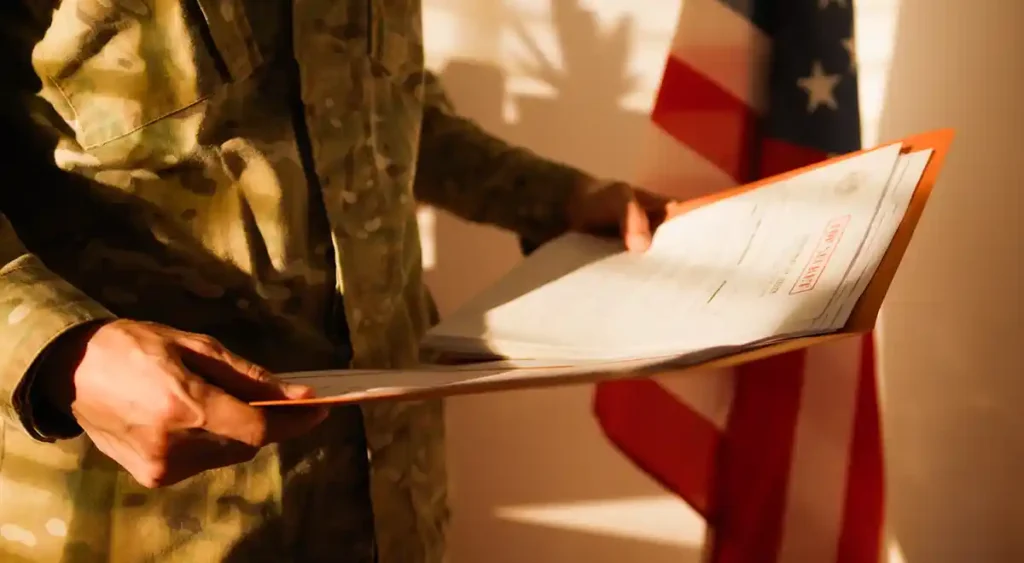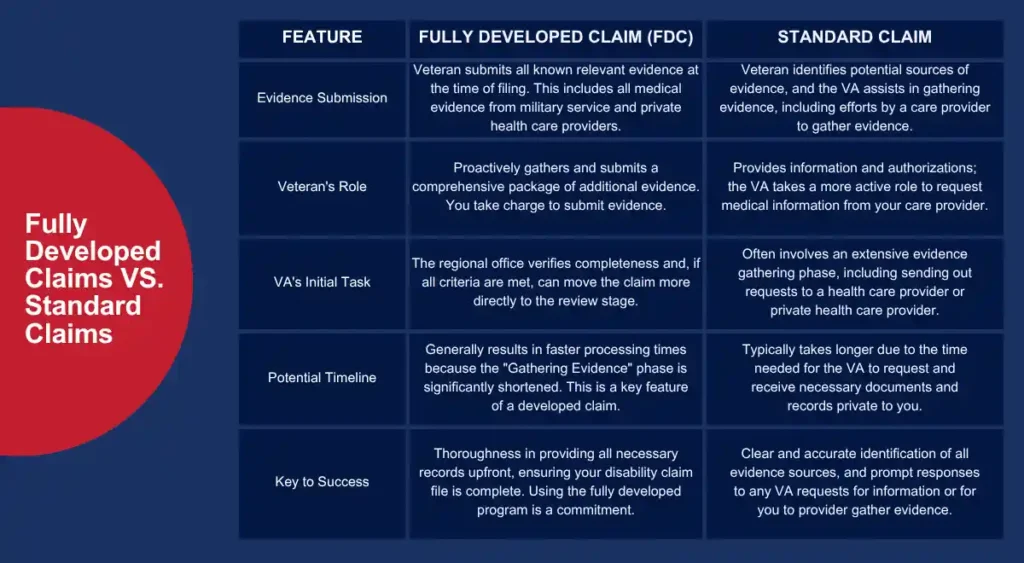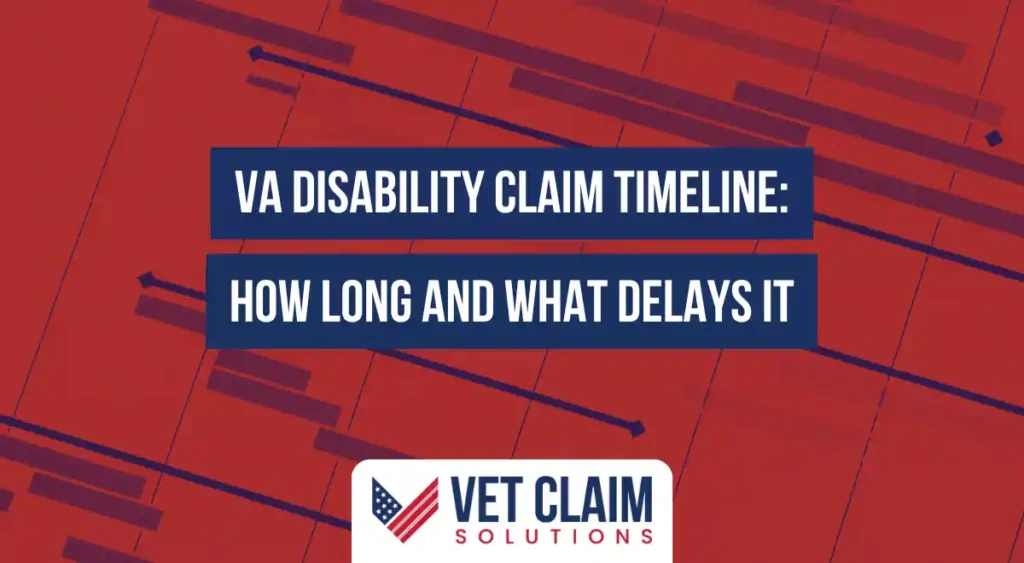You’ve put in your time serving our country. Now, you might be facing a new kind of waiting game: the VA disability claim process. It’s completely understandable to wonder about the VA Disability Claim Timeline: How Long Does It Take? Explores average processing times and what impacts delays. So many veterans ask this very question. You deserve clarity on what to expect as you look into the VA Disability Claim Timeline: How Long Does It Take? Explores average processing times and what impacts delays, because knowing can help ease some of the stress associated with pursuing your VA benefits.
Understanding the VA Claim Journey
Filing a VA disability claim is a significant step for any veteran. It is the formal procedure for obtaining disability benefits for injuries or illnesses that occurred or worsened during active military service. These benefits can provide vital financial and medical support for you and your family.
The claims process itself involves several key stages, starting from the moment you submit your application. The Department of Veterans Affairs then undertakes a review of your submission. They may request additional information or require you to attend medical examinations to evaluate your condition further.
Finally, after all necessary steps are completed, the VA makes a decision on your claim and informs you of the outcome. Understanding this journey can help manage expectations. It’s important to know that each VA claim is handled individually.

The Basic Steps in a VA Claim
It helps to know the general path your VA claim will take. Think of it like a roadmap guiding you through the VA disability claims process. Knowing these steps can make the wait a little more understandable as each plays a part in the final decision.
- Claim Received: The VA gets your application for disability benefits. They will send you a letter to confirm they have it, usually within one to two weeks. This initial acknowledgment means your claim is officially in their system.
- Initial Review: Someone at the VA, often at a regional office, conducts an initial review of your VA disability claim. They check if all the basic information is present and if the correct VA form has been used. If critical information is missing, they might contact you to provide it before proceeding.
- Gathering Evidence: This is often the longest part of the claims process. The VA will work to collect all relevant medical evidence and service records, such as your service medical records (SMRs), personnel files, and any private medical records you’ve identified. The VA has a “duty to assist” in gathering evidence, which means they will make reasonable efforts to help you obtain records needed to support your benefits claim; however, you can also submit evidence yourself to potentially speed things up. This stage involves the critical task for a health care provider to gather evidence, or for a private health care provider to gather evidence, which the VA will then request medical records for, sometimes from a private health care provider.
- C&P Exams: The VA might schedule you for Compensation and Pension (C&P) exams, also known as claim exams. A doctor contracted or employed by Veterans Affairs will evaluate your condition to provide medical evidence about its severity and connection to your service. It is very important to attend these VA claim exams as they significantly influence your case evaluation.
- Review of Evidence: After all the evidence is in, including C&P exam reports and all medical records private and military, a VA employee called a Rating Veteran Service Representative (RVSR) looks at everything. They weigh all the information in your VA disability claim file. The RVSR assesses the medical evidence to determine if your condition is service-connected and, if so, its current severity.
- Decision Preparation: The RVSR makes a rating decision recommendation. Then, your claim goes through a final check and authorization process. This step prepares the official notification documents outlining the decision.
- Decision Notification: The VA makes a final decision on your disability claims. They send you a packet in the mail with the detailed decision, an explanation of how they reached it, and your appeal rights; then it’s official. Your claim status will also be updated online.
Average VA Claim Processing Times & Delay Factors
Alright, let’s address the central question. How long does this all take? The VA provides data on average processing times for a benefits claim, but remember, these are just averages for disability claims. Your specific claim could be faster or slower based on its unique aspects.
Currently, the VA reports that, on average, it takes them around 100 to 125 days to complete a disability-related claim. You can often find the most up-to-date processing times directly on the VA’s official website. This number can change based on the volume of VA claims they are handling and other internal factors.
This timeframe generally starts from when they receive your claim to when they send out the decision. It often feels like a long time. A lot happens during those months as your claim moves through each stage of the VA claim process.
What Can Make a Claim Go Faster?
While you cannot control every aspect of the VA disability claims process, certain actions might help your claim move more quickly. Filing a Fully Developed Claim (FDC) is one of the most effective strategies. With an FDC, you submit all the necessary evidence along with your initial application.
This means you provide all relevant service medical records, private treatment records, and any supporting documents like lay statements or medical nexus letters when you first file your VA claim. Because you have already done much of the evidence-gathering work, the VA may be able to process your fully developed claim faster than a standard claim where they have to request medical records and other information. Think of it as presenting a complete package from day one, allowing for a quicker case evaluation.
Being highly organized with your paperwork also helps. Make certain all VA form documents are filled out completely and accurately. Even small mistakes or omissions can cause significant delays, requiring the VA to halt processing to request clarification or missing details from you before they we’ll review your claim further.
Here’s a comparison of Fully Developed Claims versus Standard Claims:

Common Roadblocks: Why Do VA Claims Get Delayed?
It is frustrating when your VA disability claim takes longer than you hoped. Several common factors can slow down the VA disability claim timeline. Knowing these can help you prepare and potentially avoid some pitfalls.
1. Missing Information or Paperwork
This is a frequent cause of delays. If your application, often a specific VA form, isn’t complete or contains errors, the VA must stop processing and ask you for what’s missing or needs correction. This back-and-forth communication takes valuable time from the claims process.
Ensure you have included all your service details correctly, including dates and character of discharge. Double-check that all medical information is accurate, your social security number is correct, and that you have signed and dated all required documents. Little things like a missed signature or an incorrect security number can cause a significant holdup.
2. The VA Needs More Medical Evidence
Sometimes, the initial medical evidence submitted is not sufficient for the VA to make a decision. They might need more records from your current doctor, your private health care provider, or results from specific diagnostic tests. Obtaining these additional records, especially if they are older or from multiple sources, can add weeks or even months to your claim.
If you have ongoing treatment with a health care provider for your claimed conditions, keep the VA updated by submitting new relevant medical records as they become available. This proactive approach can sometimes prevent the VA from having to formally request medical data later. Challenges can arise if records are difficult to locate, or if there are issues getting a private health care provider to gather evidence requested.
3. The Complexity of Your Conditions
If you are claiming several conditions, or if your conditions are inherently complicated, it will likely take longer to process your VA benefits claim. For example, claims for mental health conditions like Post-Traumatic Stress Disorder (PTSD) or those related to a brain injury often require very thorough development and review due to their multifaceted nature.
Claims involving toxic exposures (e.g., Agent Orange, burn pits) might also need more extensive investigation and expert medical opinions. The VA has to look at each condition separately and then determine how they might be interconnected. They need to establish a clear link for each one to your military service, and more conditions simply mean more work and a more detailed disability claims process for the reviewers.

4. VA Workload and Staffing
The Department of Veterans Affairs handles a massive number of disability claims. If there is a surge in applications, or if a particular regional office is experiencing staffing shortages, a backlog can build up. This is something completely out of your control but it directly affects processing timelines for many veterans.
Veterans Affairs continuously works on initiatives to improve efficiency and reduce backlogs, including va outreach programs to hire and train more staff. However, the sheer volume of VA claims processed annually means that systemic delays can still occur. Patience is often required, though understanding this factor helps frame expectations.
5. Waiting for C&P Exams
As mentioned, you will likely need to attend one or more C&P exams. Getting these claim exams scheduled can take time, depending on the availability of qualified examiners in your area. Sometimes, specialized examiners are needed for certain conditions, which can further extend the scheduling wait.
After the exam, the examiner must write up their report and submit it to the VA. This also adds to the timeline. It is extremely important to attend all scheduled C&P exams; if you miss one without proper notification and rescheduling, it will definitely delay your claim. The VA we’ll contact you about these appointments, so keep your contact information current.
6. Type of Claim Filed
Filing a Fully Developed Claim can be faster, as discussed. A standard claim, where the VA takes on more responsibility for gathering evidence, generally takes longer because of that extensive evidence-gathering phase. This type of benefits claim requires more active involvement from the VA staff.
If you file an appeal after an initial decision, that introduces a whole different timeline, which is often much longer than for an initial claim. Other types of claims, such as claims for increased disability ratings or reopened claims based on new evidence, also have their own processing nuances. Think carefully about how you file your VA claim.
7. You Moved or Your Contact Info Changed
If the VA cannot reach you, your claim can stall. Make certain your mailing address, phone number, and email address are always up to date with Veterans Affairs. This is crucial because the VA sends important notices and requests by mail, and sometimes by phone.
If they send you a letter requiring a response and it is returned as undeliverable, they might pause work on your claim until they can re-establish contact. This seems like a simple thing, but life changes, and people move. Just remember to promptly inform the VA of any changes to your contact details to avoid unnecessary interruptions in your claim status updates or requests for information.
Keeping Tabs on Your VA Claim Status
Waiting is hard, but you do not have to be completely in the dark about your VA disability claim. You can check the status of your VA claim, which can give you a general idea of where it is in the process. This transparency can help manage the anxiety of waiting.
The easiest way is usually online through your VA.gov account. After logging in, you can see what stage your claim is in (e.g., initial review, gathering evidence, preparation for decision). They usually update the claim status when it moves from one significant step to the next.
You can also call the VA national call center at 1-800-827-1000. Be prepared for possible hold times, but a representative can often look up your status and provide information. Checking your va claim status obsessively probably will not make it go faster, but knowing you can get an update might bring a little peace of mind. Remember, the online status is typically a summary and may not reflect every internal action being taken on your disability claim file.
After the VA Makes a Decision
Eventually, you will receive that important packet in the mail from Veterans Affairs. This contains the VA’s decision on your disability claims. Hopefully, it brings good news and the VA benefits you deserve.
The decision letter will tell you several key things, such as whether your claimed conditions are considered service-connected. It will also state your disability rating for each approved condition, which is a percentage from 0% to 100%. If you have multiple approved conditions, it will include your combined disability rating, calculated using a specific VA formula.
Additionally, the letter specifies the effective date of your benefits, which is very important as it often determines any back pay owed. This date is usually the date the VA received your claim or the date you first became sick or injured, if proven. Finally, it will detail how much your monthly compensation payment will be. Read this letter very carefully, as it contains a lot of important information about your VA disability claims outcome.

What If You Disagree with the Decision?
Sometimes, the VA might deny your claim entirely, or you might receive a lower disability rating than you believe your condition warrants. If this happens, you have options. You do not have to just accept a decision from Veterans Affairs that you feel is incorrect.
You generally have one year from the date on your decision letter to file an appeal. There are a few different appeal paths you can choose under the Appeals Modernization Act (AMA):
- Supplemental Claim: You can file this if you have new and relevant evidence that was not submitted before when your initial va claim was processed. “New” means the VA didn’t have it before, and “relevant” means it could affect the decision. This is an opportunity to submit additional evidence to strengthen your case.
- Higher-Level Review: You can ask for a more experienced adjudicator at the VA regional office to look at your case again, using the same evidence that was available at the time of the original decision. No new evidence is allowed in this lane. The reviewer conducts a fresh case evaluation to see if an error or difference of opinion occurred.
- Board Appeal: You can appeal directly to the Board of Veterans’ Appeals (BVA). Within this path, you have three options: direct review (no new evidence, no hearing), evidence submission (submit more evidence within 90 days of appeal), or a hearing with a Veterans Law Judge. Some veterans explore a free case evaluation with an accredited representative to understand their best appeal option. While different from Social Security or Security Disability processes, the VA appeals system also has specific procedures.
The appeals process has its own timelines. These can often be quite long, sometimes taking a year or even more, depending on the chosen lane and the complexity of the appeal.
Tips for a Smoother VA Claim Journey
While there are no magic wands to speed through the VA disability claims process, there are things you can do to help your claim proceed as smoothly as possible. These tips might not make your claim super fast, but they can help avoid unnecessary hold-ups and contribute to a more organized submission for your benefits claim. Following these suggestions can make the entire VA claim experience more manageable.
- Be Thorough and Organized: When you first file your VA claim, try to give the VA everything they might need. Use checklists to ensure no information is missed on your VA form. Make copies of everything you send for your personal claim file and organize your documents logically.
- Submit a Fully Developed Claim if Possible: As discussed, this can cut down on the evidence-gathering phase if your VA disability claim is truly fully developed.
- Attend All C&P Exams: This is critical for your VA disability claims. Missing a claim exam is a surefire way to delay your claim, as the VA will often put your claim on hold until the exam is completed and we’ll contact you to reschedule. If you absolutely cannot make an appointment for your VA claim exams, call to reschedule as soon as possible.
- Respond Quickly to VA Requests: If the VA asks for more information or documents for your VA disability claim file, get it back to them as soon as you can. Pay close attention to any deadlines they give you, as failure to respond in time can lead to an unfavorable decision on your disability claims based on the evidence of record.
- Keep Your Contact Information Updated: If you move or change your phone number or email, inform Veterans Affairs right away. This prevents communication breakdowns and ensures you receive all correspondence regarding your claim status and any requests for your input.
- Be Patient but Persistent: This VA claim process takes time. Try to be patient. However, if you feel something is wrong or your claim seems stuck for an unusually long time without updates, do not be afraid to follow up politely with the VA.
- Keep Your Own Records: Maintain a comprehensive personal file with copies of everything you send to the VA and everything they send to you related to your disability claim file. Note down dates of calls, who you spoke with, and any reference numbers given. Good records, including information about your medical records private and military, can be very helpful if issues arise or if you need to reference past communications or submissions.
Filing a VA disability claim is often a marathon, not a sprint. Preparing well, understanding the road ahead, and utilizing available VA resources can make the journey a bit less stressful and help you successfully obtain the VA benefits you earned.

Conclusion
Waiting for a decision on your VA disability claim can certainly test anyone’s patience. The VA Disability Claim Timeline: How Long Does It Take? Explores average processing times and what impacts delays, and the answer truly depends on many individual factors unique to each veteran’s case and the specifics of their disability claims. While averages for VA claims hover around a few months, your own experience with the VA claim process could be different.
Knowing what can cause slowdowns in the VA disability claims process, like missing information on a VA form, the need for more medical evidence perhaps related to a complex brain injury, or the overall complexity of your case, can help you prepare. By being thorough with your application, diligently gathering evidence from every care provider, attending all your claim exams, and promptly responding to VA requests, you are doing your part to help things move along as efficiently as possible.


